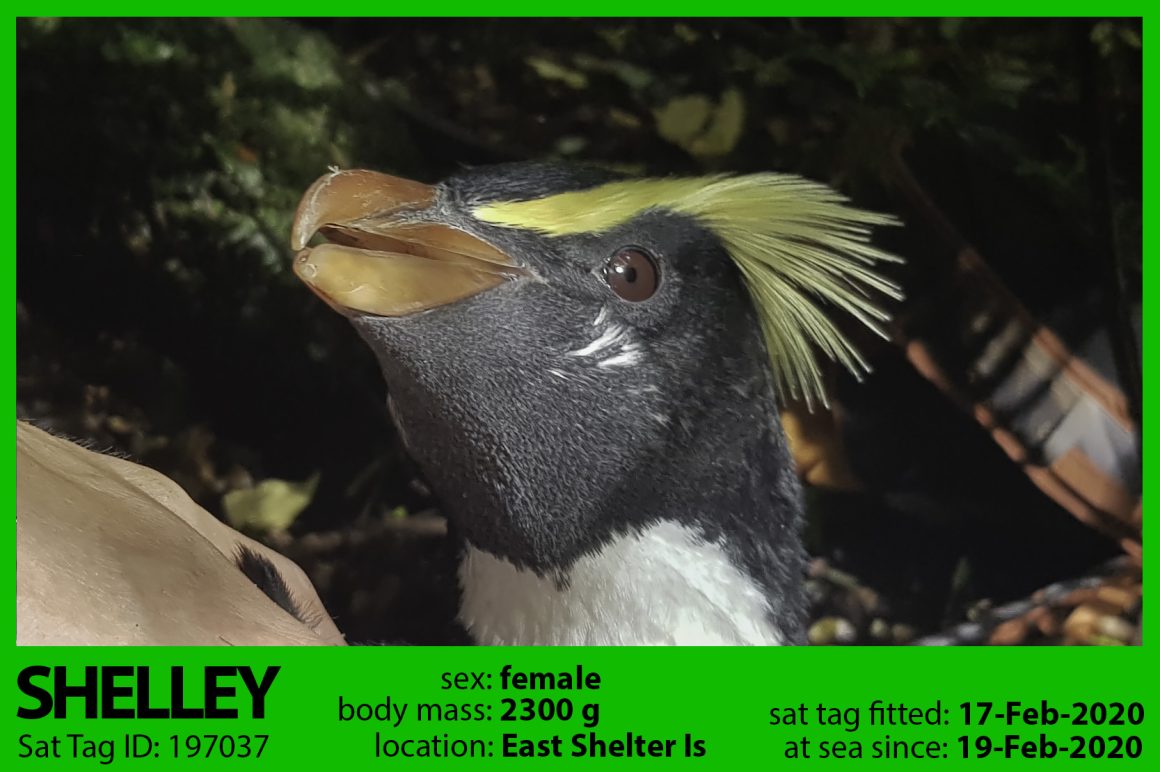Shelley

Let’s talk about ‘normal moulters’. The great book of penguins claims that the birds generally return to their breeding colonies to go through their annual feather change. In tawaki, this may or may not be. There are a lot of birds the moult on the East coast of New Zealand’s South Island, and the last few days we introduced you to quite a few of them. However, there a no tawaki breeding on this side of the South Island. Perhaps they are young birds that haven’t bred yet, and quite a few like Tereza, Jill and Velma seem to fit that bill.

In the third week of February, we made it to the Shelter Islands at the entrance of Doubtful Sound/Patea, Fiordland. More specifically, on 17 February we landed on East Shelter Island that we had visited on a recce trip last September. And we found it full of tawaki.

The island itself is a nightmare to move around. The forest is packed to the brim with supplejack vines that sling themselves around body parts and backpacks with glee. And a lot of the moulting tawaki seem to be running around freely in this mess. They hang out in small groups and are very mobile. So, finding a likely candidate for a satellite deployment was a bit of daunting task to start with.
Until we came across a pair that were hanging out in dirt cave under a massive tree root. The female looked at us incredulously and was visibly confused when we picked her up to attach a device. Her apparent mate, evidently a truly gallant hero, buggered off and was nowhere to be found henceforth.
Shelley, as we quickly named the female as she was our first bird on Shelter Island, remained calm during the deployment period. She also maintained her confusion as to what had happened to her after we released her back into her dirt cave. In fact, as if to double check that what just happened really happened, she walked right back out towards us to give us a seriously befuddled look.

Shelley left the island early the next morning but returned after exploring the outer ranges of Doubtful Sound to spend another night at home. On 19 February she left Fiordland for good. For the first couple of weeks at sea, she followed the example of the East coast penguins in that she travelled in a south-westward direction.

But around 5th March she turned due west. She has been swimming along the 10-11°C water temperature isolines which mark the location of the Subtropical Front (STF) where warm subtropical water (10-20°) meets cool subantarctic water (4-10°C). This front is a physical barrier where penguin prey tends to accumulate – and which is the main region that closely related Snares penguins tend to go on their winter journeys.
Today, Shelley is about 450 km due south of Tasmania.




